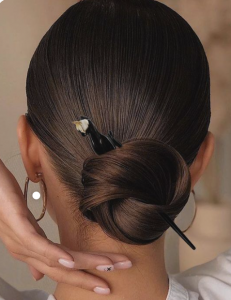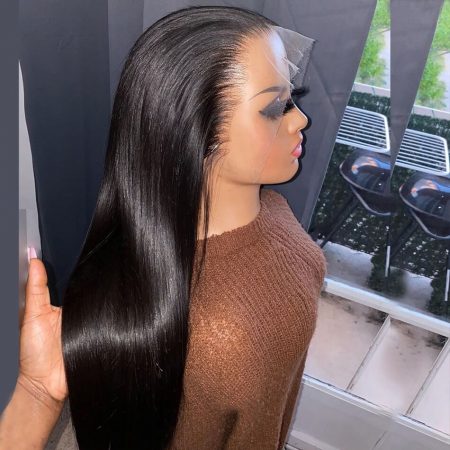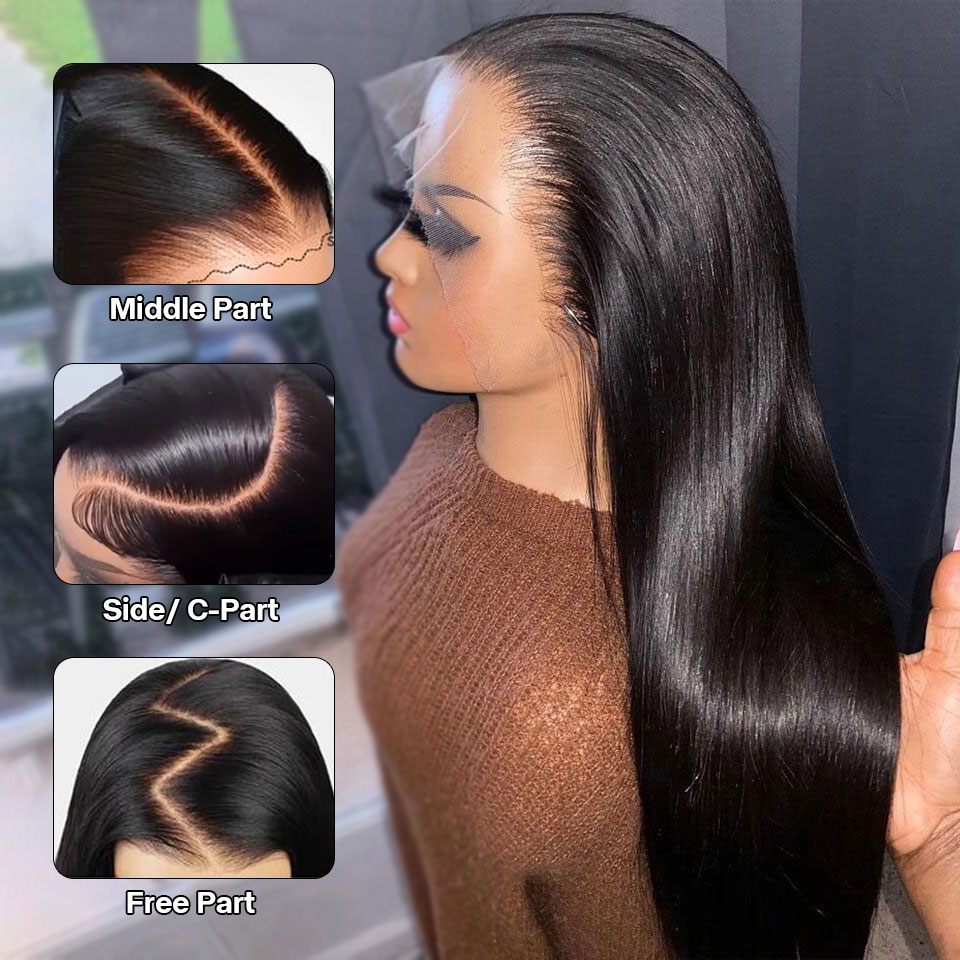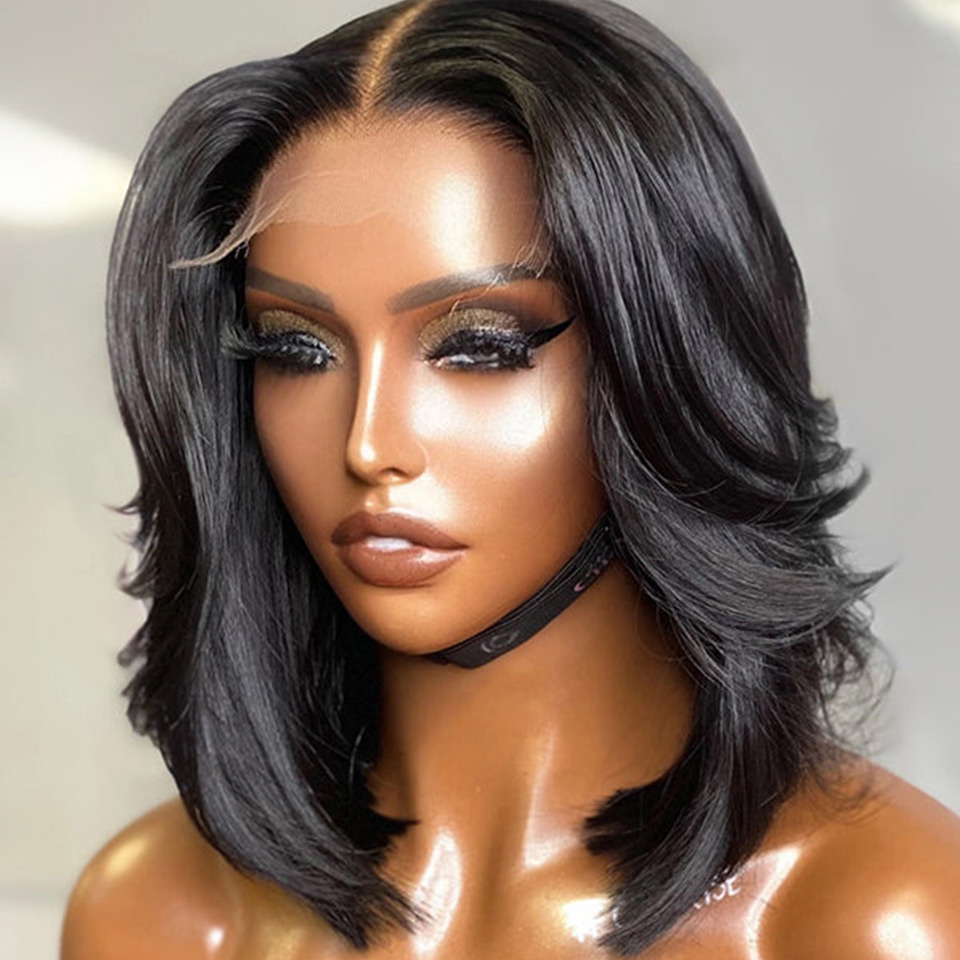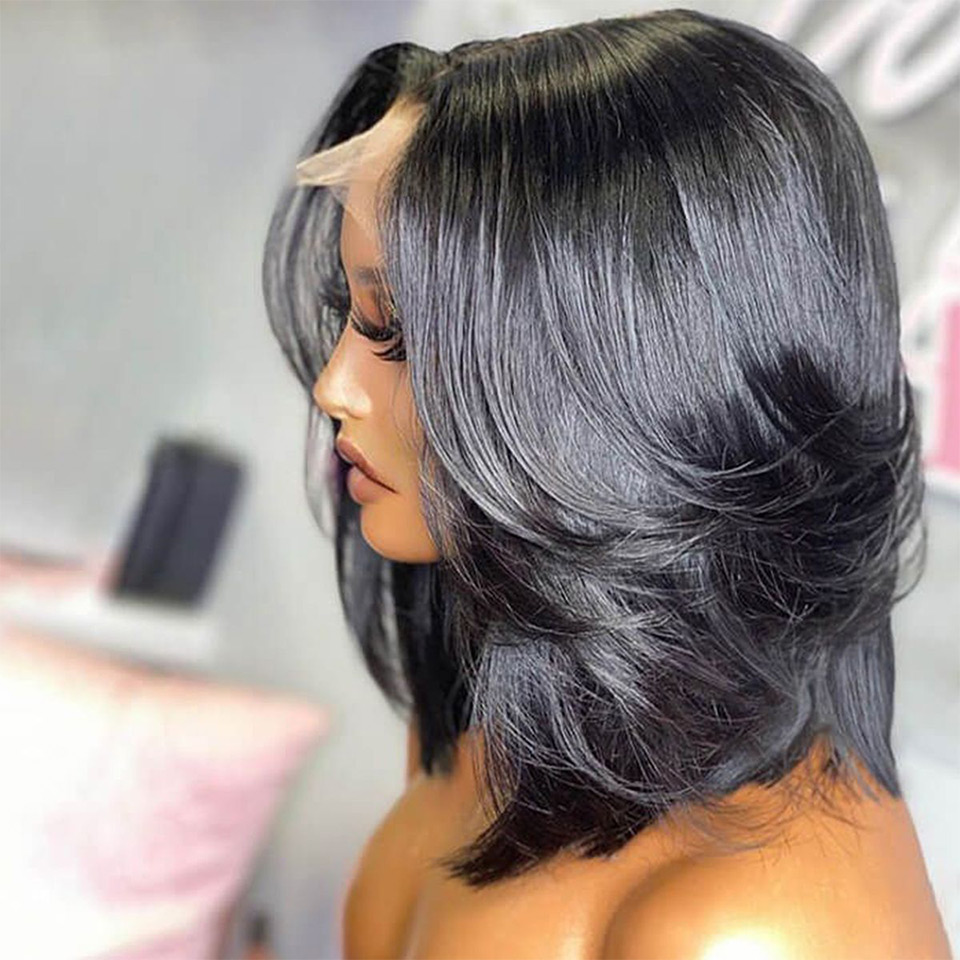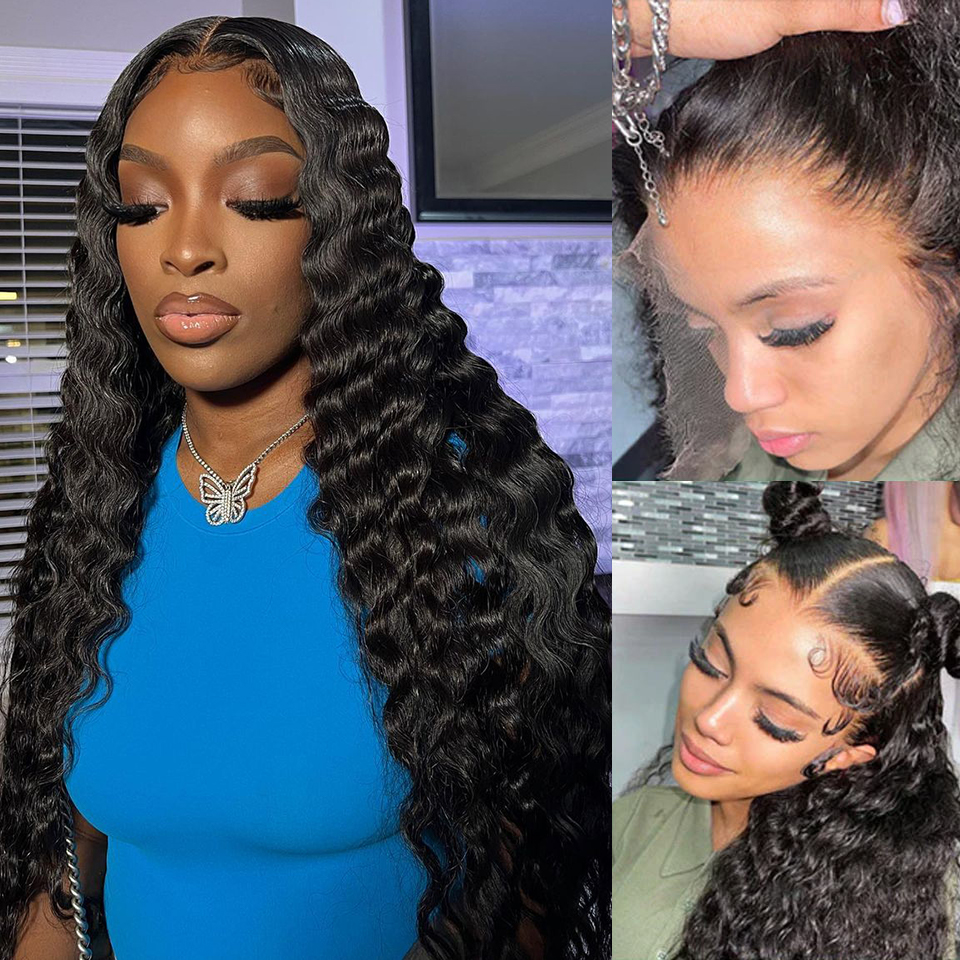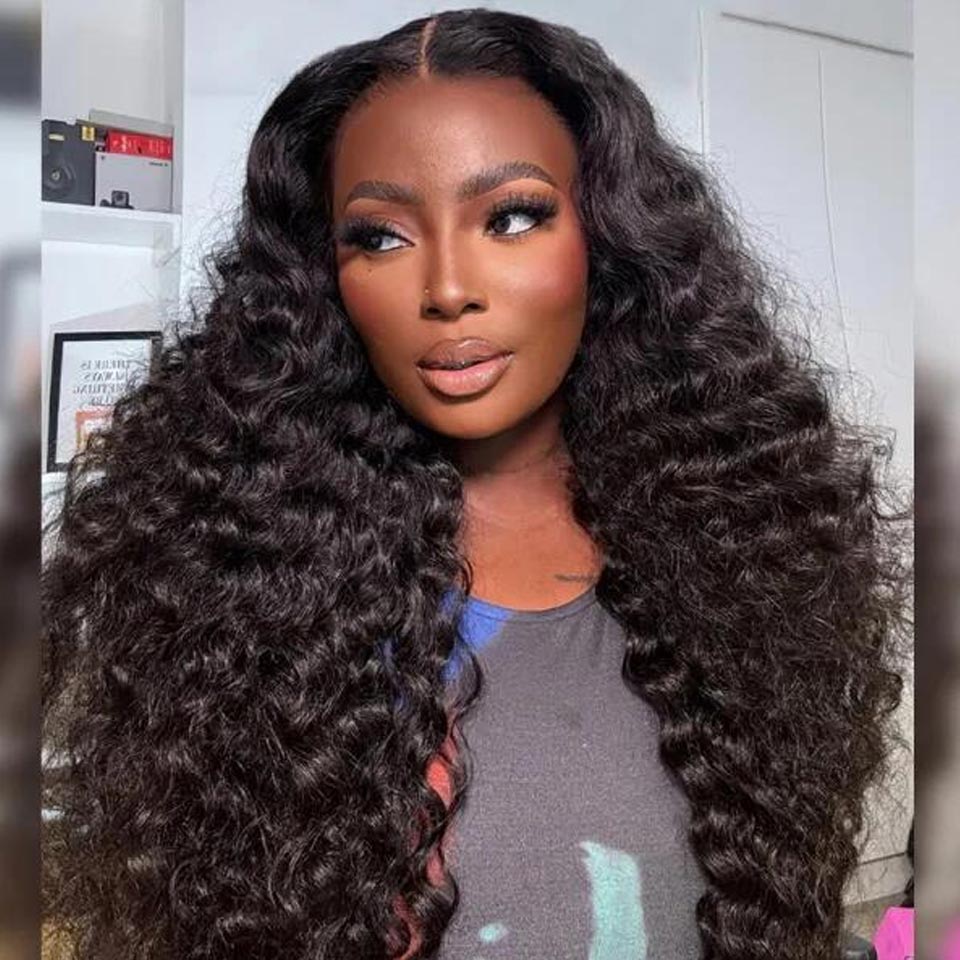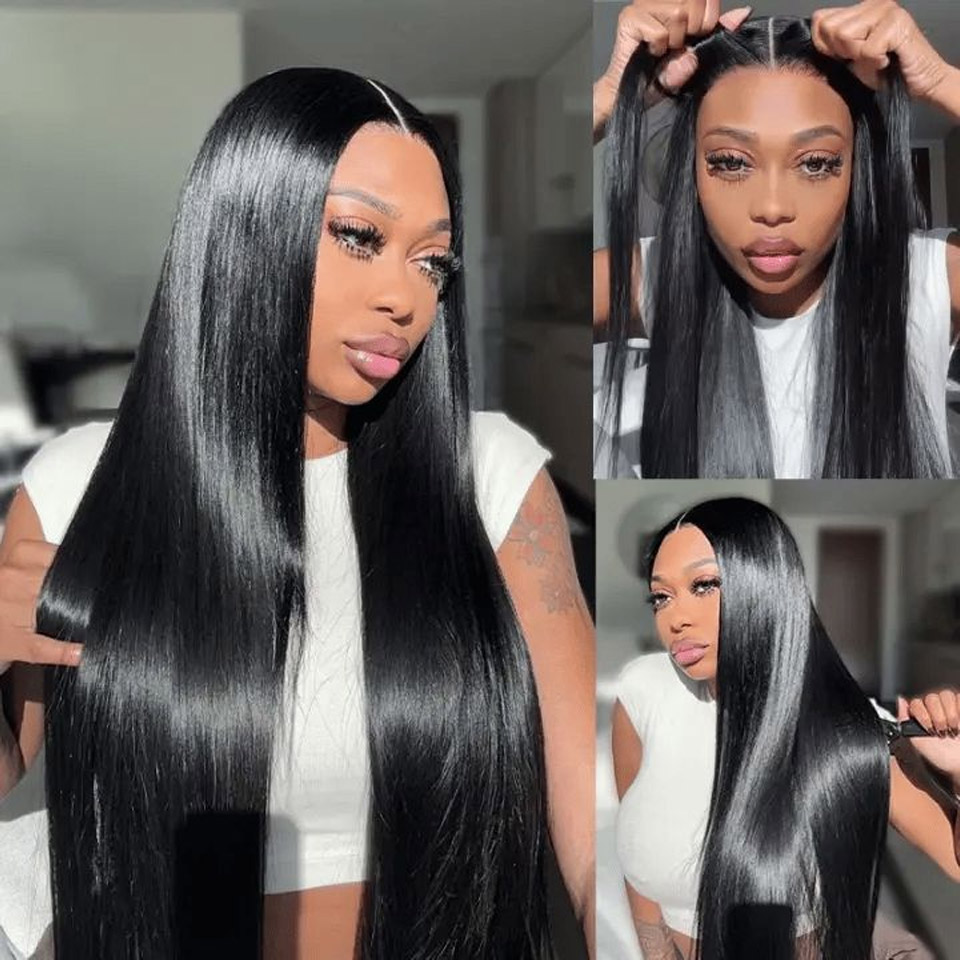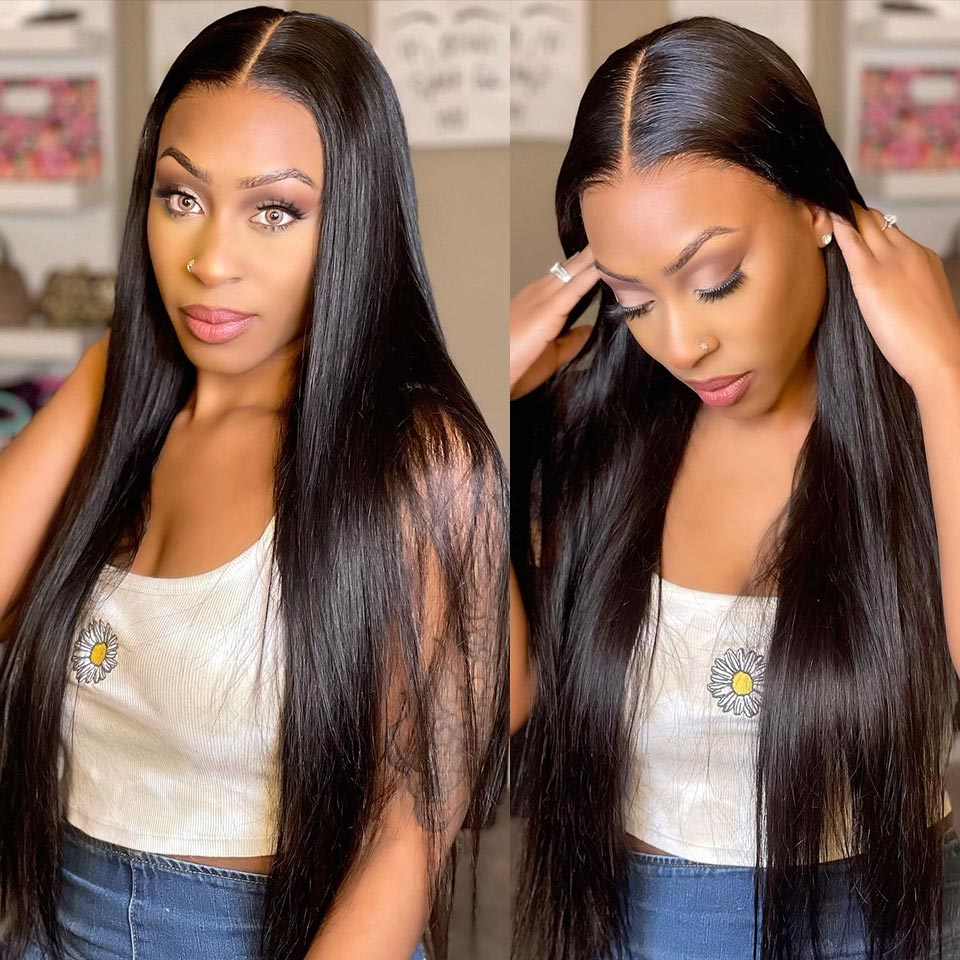Human hair wigs have long been cherished for their natural appearance and versatility. However, the introduction of synthetic bundles has brought a new dimension to wig styling, offering a blend of practicality and aesthetics. Combining synthetic bundles with human hair wigs can enhance volume, add vibrant colors, and introduce new textures, all while maintaining a sharp, polished look. This comprehensive guide will walk you through the best practices for seamlessly integrating synthetic bundles into your human hair wig, ensuring a flawless and stylish appearance.
You Should Know The Basic.
What Are Human Hair Wigs?
Human hair wigs are made from real human hair, providing the most natural look and feel. They offer several benefits:
Natural Appearance: They mimic natural hair in both texture and movement.
Versatility: Can be styled using heat tools, dyed, and treated like natural hair.
Longevity: With proper care, they can last for a long time.
What Are Synthetic Bundles?
Synthetic bundles are made from man-made fibers designed to resemble natural hair. They are available in a variety of textures and colors, providing several advantages:
Affordability: Generally less expensive than human hair.
Color Options: Available in a wide range of colors, including vibrant and unconventional shades.
Low Maintenance: Retain their style even after washing.
Why Combine Synthetic Bundles with Human Hair Wigs?
Combining synthetic bundles with human hair wigs can offer the best of both worlds. Here’s why you might consider this approach:
Cost Efficiency: Enhance your wig without the high cost of additional human hair.
Creative Freedom: Experiment with different styles and colors without committing to permanent changes.
Volume and Length: Easily add volume and length to your wig.
Preparing Your Wig and Bundles.
Selecting the Right Synthetic Bundles.
When choosing synthetic bundles, consider the following:
Texture: Ensure the texture of the synthetic hair matches or complements the human hair wig.
Color: Choose a color that blends seamlessly with the wig or provides a desired contrast.
Quality: Opt for high-quality synthetic fibers that closely resemble human hair.
Tools and Materials Needed.
Before you start, gather the necessary tools and materials:
Synthetic Bundles: Selected based on texture and color.
Human Hair Wig: Clean and detangled.
Weaving Needle and Thread: For sewing the bundles into the wig.
Scissors: To trim the synthetic bundles and thread.
Wig Stand: To hold the wig in place while you work.
Clips: To section the hair.
Heat-Protectant Spray: If you plan to style the synthetic hair with heat.
Step-by-Step Guide to Adding Synthetic Bundles to a Human Hair Wig.
Step 1: Preparing the Wig.
Wash and Condition: Start with a clean wig. Wash and condition the human hair wig to ensure it is free of any product buildup.
Dry and Detangle: Allow the wig to air dry or use a blow dryer on a low setting. Once dry, gently detangle the wig using a wide-tooth comb.

Step 2: Preparing the Synthetic Bundles.
Wash and Condition: Gently wash the synthetic bundles to remove any factory residues. Use a conditioner designed for synthetic hair.
Dry and Detangle: Air dry the bundles and detangle them carefully.

Step 3: Sectioning the Wig.
Secure the Wig: Place the wig on a wig stand and secure it with pins.
Section the Hair: Use clips to section the wig. Start at the nape of the neck and work your way up.

Step 4: Sewing the Synthetic Bundles.
Thread the Needle: Use a strong, matching thread to avoid visibility.
Attach the Bundles: Begin sewing the synthetic bundles into the wefts of the human hair wig. Use a blanket stitch or lock stitch for security.
Blending: Sew the bundles close together to ensure a seamless blend with the human hair.

Step 5: Styling.
Trimming: Trim the synthetic bundles to match the length of the human hair wig if necessary.
Heat Styling: If your synthetic hair is heat-resistant, you can style it using heat tools. Always use a heat-protectant spray.
Blending the Hair: Use a wide-tooth comb or a brush to blend the synthetic hair with the human hair. Ensure there are no visible lines of demarcation.

Maintaining Your Enhanced Wig.
Washing and Conditioning.
Human Hair: Wash the human hair part of the wig regularly with sulfate-free shampoo and conditioner.
Synthetic Hair: Use products specifically designed for synthetic hair to maintain its texture and prevent frizz.
Storing the Wig.
Proper Storage: Store the wig on a wig stand to maintain its shape.
Avoid Heat: Keep the wig away from direct sunlight and heat sources to prevent damage to synthetic fibers.
Regular Maintenance.
Detangling: Regularly detangle the wig to prevent matting. Use a wide-tooth comb for both human and synthetic hair.
Re-styling: Periodically restyle the synthetic bundles to keep them looking fresh and natural.
Advanced Techniques for a Professional Finish.
Blending Techniques.
Color Blending: If the synthetic bundles are a different color, use a coloring technique to blend the colors seamlessly.
Layering: Layer the synthetic bundles to create a natural look. This can be done by cutting the hair at different lengths.
Customization.
Root Shading: Add darker roots to synthetic bundles for a natural growth appearance.
Highlights and Lowlights: Mix synthetic bundles of different shades to create highlights and lowlights, adding dimension to the wig.
Styling Tips.
Curling: Use flexi-rods or perm rods for heat-free curling of synthetic bundles.
Straightening: For synthetic hair that can handle heat, use a flat iron on a low setting.
Troubleshooting Common Issues.
When integrating synthetic bundles into a human hair wig, you might encounter some challenges. Understanding these issues and knowing how to address them is crucial for maintaining a flawless and stylish look. Here’s a detailed guide on troubleshooting common issues:
1. Tangles and Matting.
Preventive Care:
Regular Detangling: Always detangle your wig after each use. Use a wide-tooth comb for human hair and a specialized wig brush for synthetic hair.
Proper Storage: Store the wig on a wig stand or in a satin-lined box to prevent tangling when not in use.
Detangling Process:
Spray a Detangler: Use a detangling spray designed for synthetic hair, starting from the ends and working your way up.
Section the Hair: Divide the wig into manageable sections.
Gentle Combing: Begin detangling from the tips, slowly working your way up to the roots.
Products to Use:
Conditioning Sprays: Sprays specifically for synthetic wigs can help maintain smoothness.
Leave-in Conditioners: Use a leave-in conditioner for the human hair parts to keep them soft and tangle-free.
2. Shedding.
Preventive Measures:
Secure Sewing: Ensure that the synthetic bundles are securely sewn into the wig. Use a lock stitch or blanket stitch for extra security.
Gentle Handling: Avoid pulling or tugging on the hair. Handle the wig gently, especially when detangling or styling.
Addressing Shedding:
Inspect the Wig: Regularly check the wefts and seams to ensure they are intact.
Reinforce Wefts: If shedding occurs, reinforce the wefts by sewing them tighter or applying a small amount of wig glue to secure loose hairs.
Products to Use:
Weft Sealant: Apply a weft sealant to the edges of the wefts to reduce shedding.
3. Shine and Luster.
Maintaining Shine:
Use Appropriate Products: Avoid regular hair products on synthetic wigs. Instead, use those specifically formulated for synthetic fibers.
Avoid Overwashing: Washing synthetic hair too frequently can strip it of its natural shine. Wash only when necessary.
Restoring Luster:
Synthetic Hair Sprays: Use a shine spray formulated for synthetic wigs to maintain and enhance luster.
Silicone-Based Products: These can help add shine and reduce frizz in synthetic hair.
Products to Use:
Wig Conditioning Spray: To maintain shine and smoothness.
Silicone Serum: For occasional use to restore luster.
4. Blending and Texture Matching.
Achieving Seamless Blending:
Texture Matching: Ensure the synthetic bundles match the texture of the human hair wig. This can involve choosing curly, wavy, or straight synthetic hair to match the wig.
Color Blending: If the synthetic bundles are a different color, consider dyeing the human hair to match or opt for a color blending technique.
Addressing Texture Mismatch:
Heat Styling: If the synthetic hair is heat-resistant, use low-heat tools to match the texture.
Blending Techniques: Use layers to create a seamless transition between the human and synthetic hair.
Products to Use:
Heat Protectant: If using heat tools on synthetic hair.
Texturizing Spray: To blend the different textures seamlessly.
5. Frizz and Flyaways.
Preventing Frizz:
Avoid Humidity: Humidity can cause frizz, so try to avoid exposing the wig to moist environments.
Use Anti-Frizz Products: Apply anti-frizz serums and sprays designed for synthetic wigs.
Addressing Frizz:
Conditioning Sprays: Regularly use conditioning sprays to keep the hair smooth.
Steam Treatment: For synthetic hair, a steam treatment can help reduce frizz. Use a handheld steamer to gently smooth out the fibers.
Products to Use:
Anti-Frizz Serum: To keep both human and synthetic hair smooth.
Conditioning Spray: Specifically for synthetic hair.
6. Curl Retention and Styling.
Maintaining Curls:
Use Curl-Friendly Products: Products like mousse or curl-enhancing sprays designed for synthetic hair can help maintain curls.
Avoid Excessive Heat: Synthetic hair can be damaged by high heat, so use heat tools sparingly and on the lowest setting if heat-resistant.
Addressing Curl Loss:
Flexi Rods or Perm Rods: Use these tools to set curls without heat. Simply wrap the hair around the rods and allow it to set overnight or use a steamer for quicker results.
Steam Setting: A steamer can help reset curls in synthetic hair. Be gentle to avoid damaging the fibers.
Products to Use:
Curl Enhancing Spray: For maintaining curls in synthetic hair.
Setting Lotion: For setting curls with rods.
7. Fading and Color Maintenance.
Preventing Fading:
Minimize Sun Exposure: Prolonged exposure to direct sunlight can cause synthetic hair to fade. Wear a hat or scarf when outside for long periods.
Use Color-Safe Products: Use shampoos and conditioners that are safe for color-treated hair.
Addressing Fading:
Color Sprays: Use temporary color sprays designed for synthetic wigs to refresh the color.
Fabric Dye: In some cases, fabric dye can be used to refresh the color of synthetic hair, but this requires careful handling.
Products to Use:
UV Protectant Spray: To protect against sun damage.
Color Refresh Spray: For synthetic hair.
8. Volume and Shape.
Maintaining Volume:
Proper Storage: Store the wig on a stand to help maintain its shape and volume.
Avoid Compression: Do not compress the wig when storing it, as this can flatten the hair.
Addressing Volume Loss:
Teasing and Backcombing: Gently tease the roots of the synthetic hair to add volume.
Volumizing Products: Use mousse or volumizing spray designed for synthetic hair.
Products to Use:
Volumizing Mousse: To add body and volume.
Root Lifting Spray: For enhanced volume at the roots.
Summary up.
Integrating synthetic bundles into a human hair wig is a fantastic way to enhance its appearance, add volume, and experiment with new styles. By carefully selecting high-quality synthetic bundles, using the right techniques to attach and blend them, and maintaining the wig properly, you can achieve a sharp, polished look that turns heads.
Remember, the key to a successful blend lies in attention to detail and regular maintenance. Whether you’re looking to add a splash of color, increase volume, or simply refresh your wig’s look, synthetic bundles offer a versatile and cost-effective solution. Embrace the possibilities and enjoy the new dimension of style that synthetic bundles can bring to your human hair wig.






